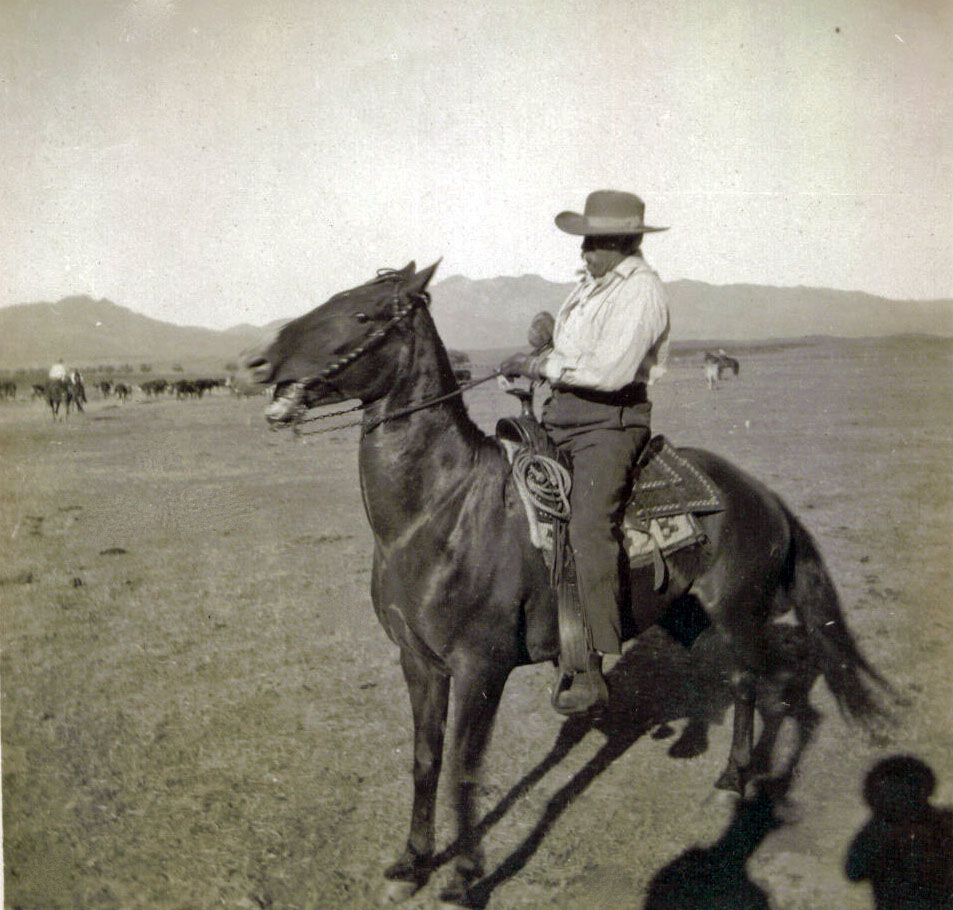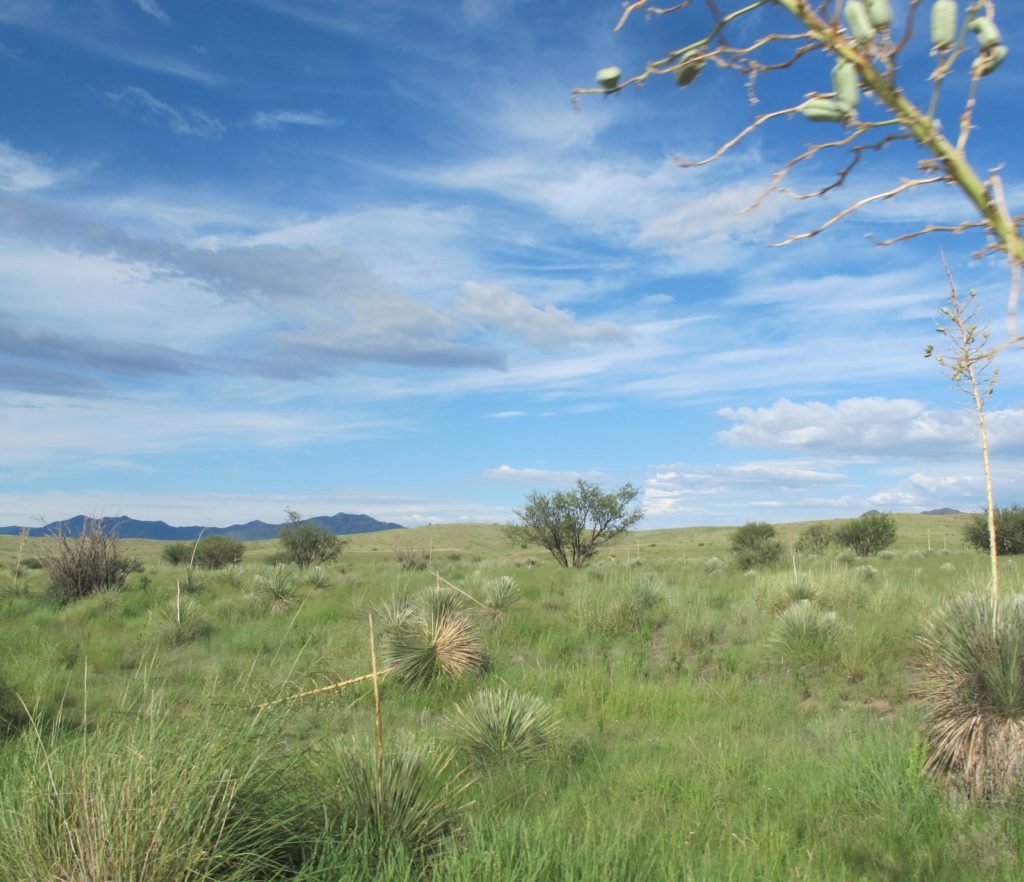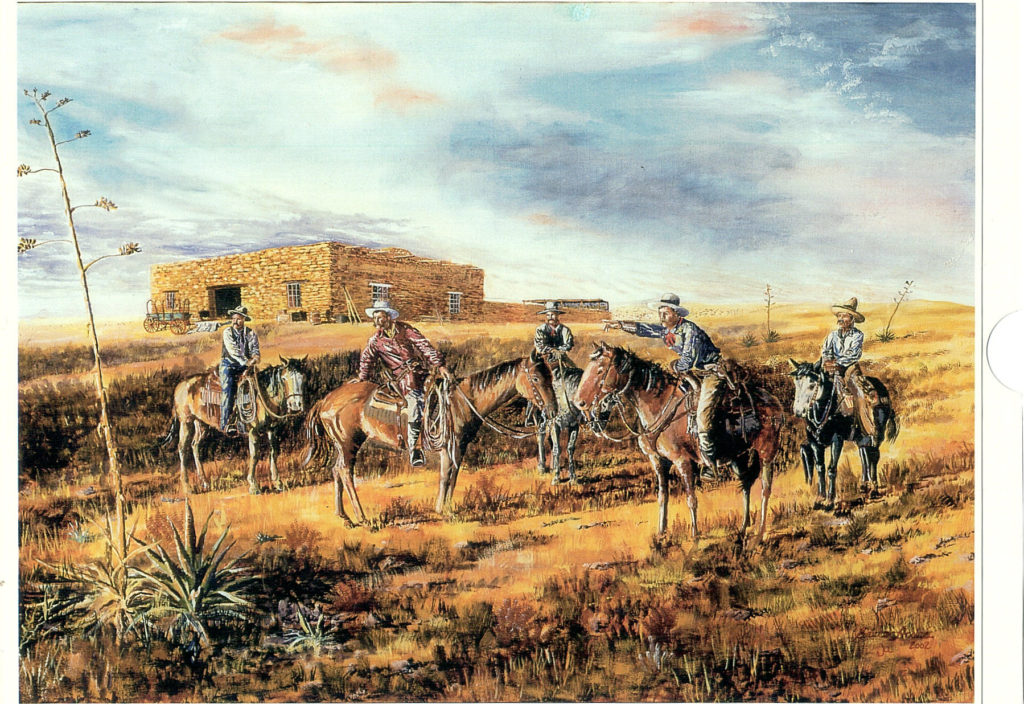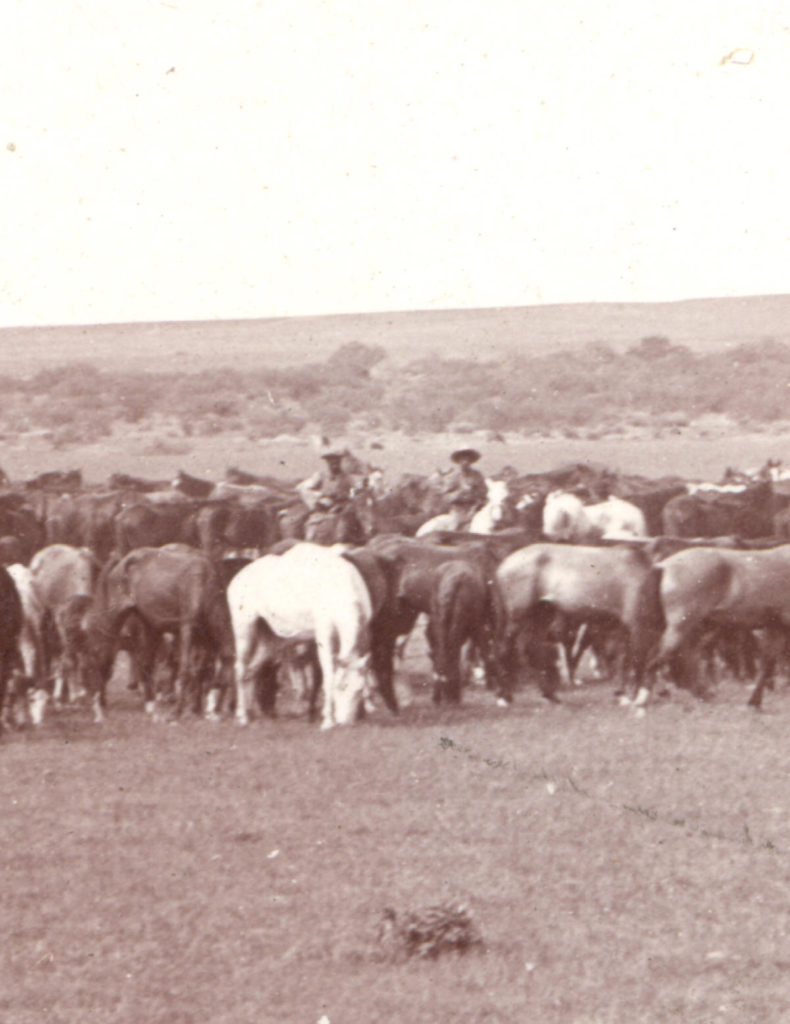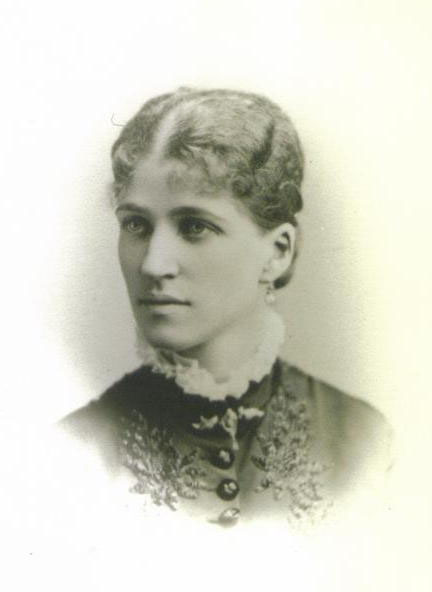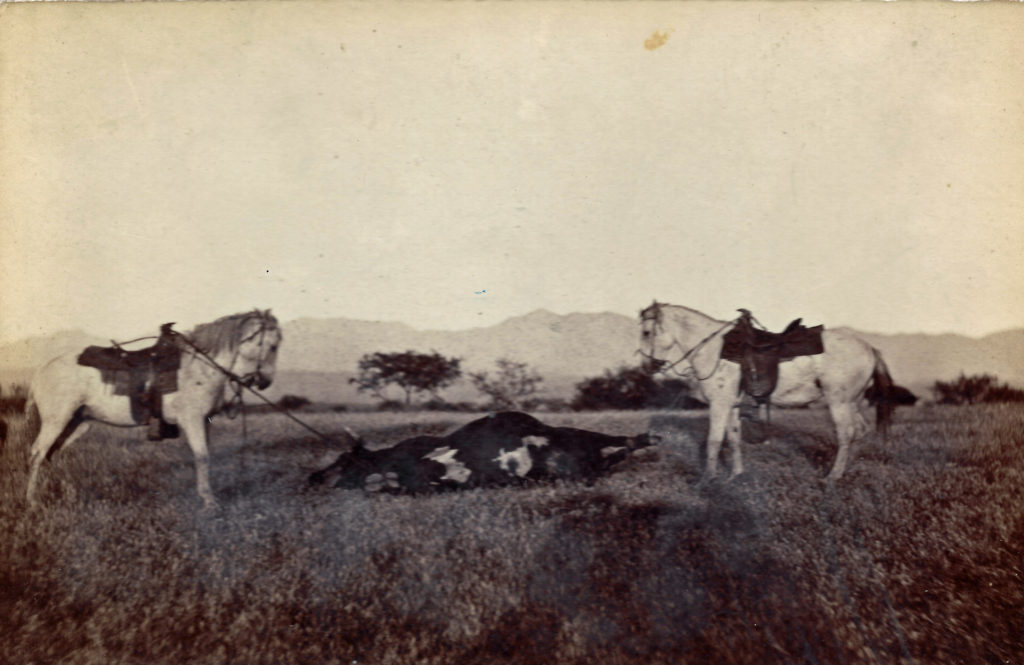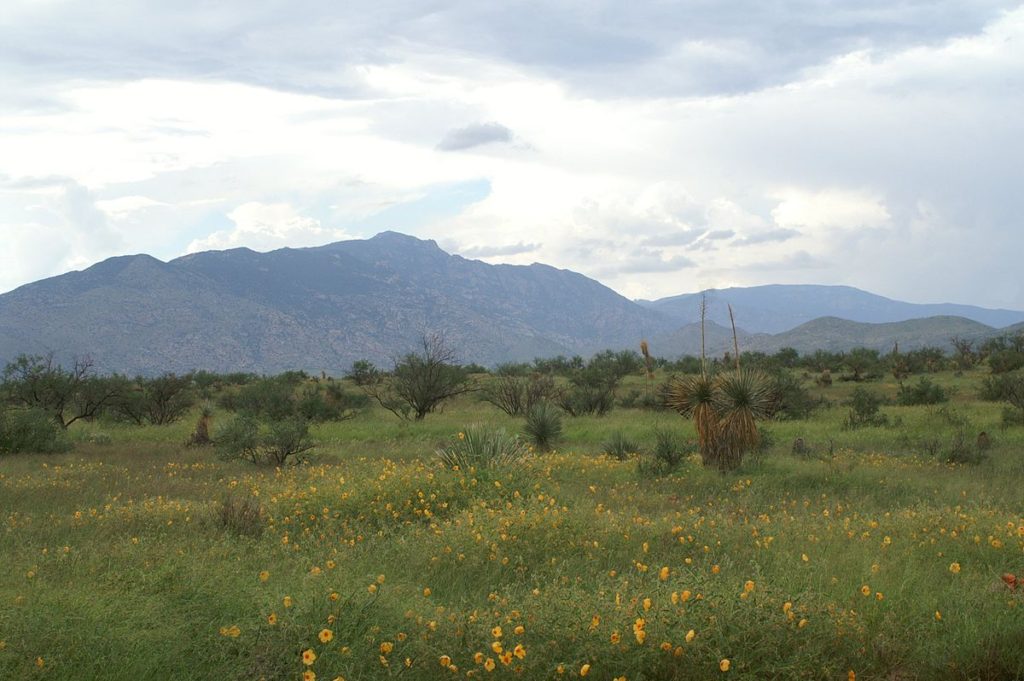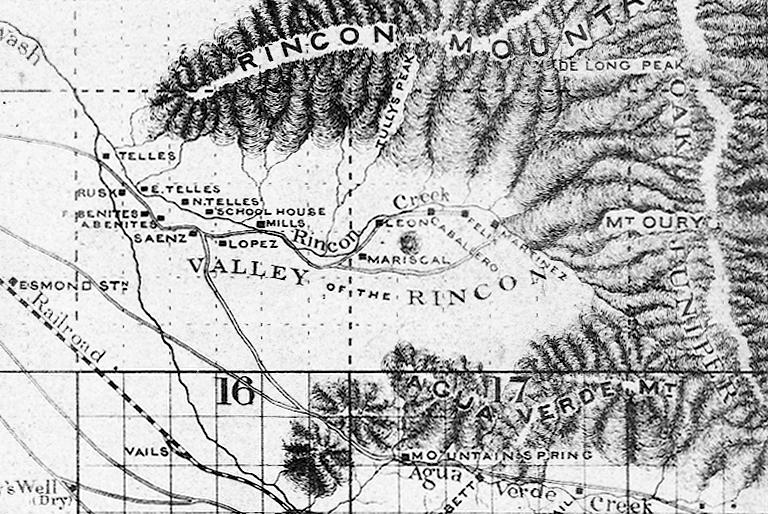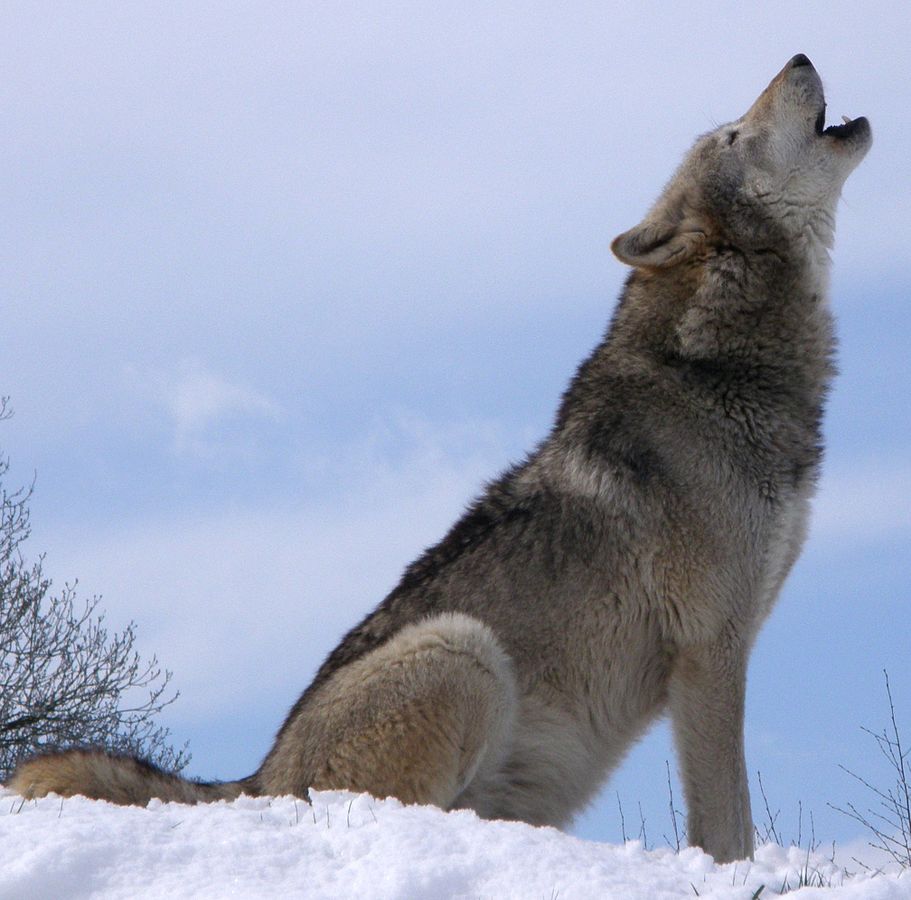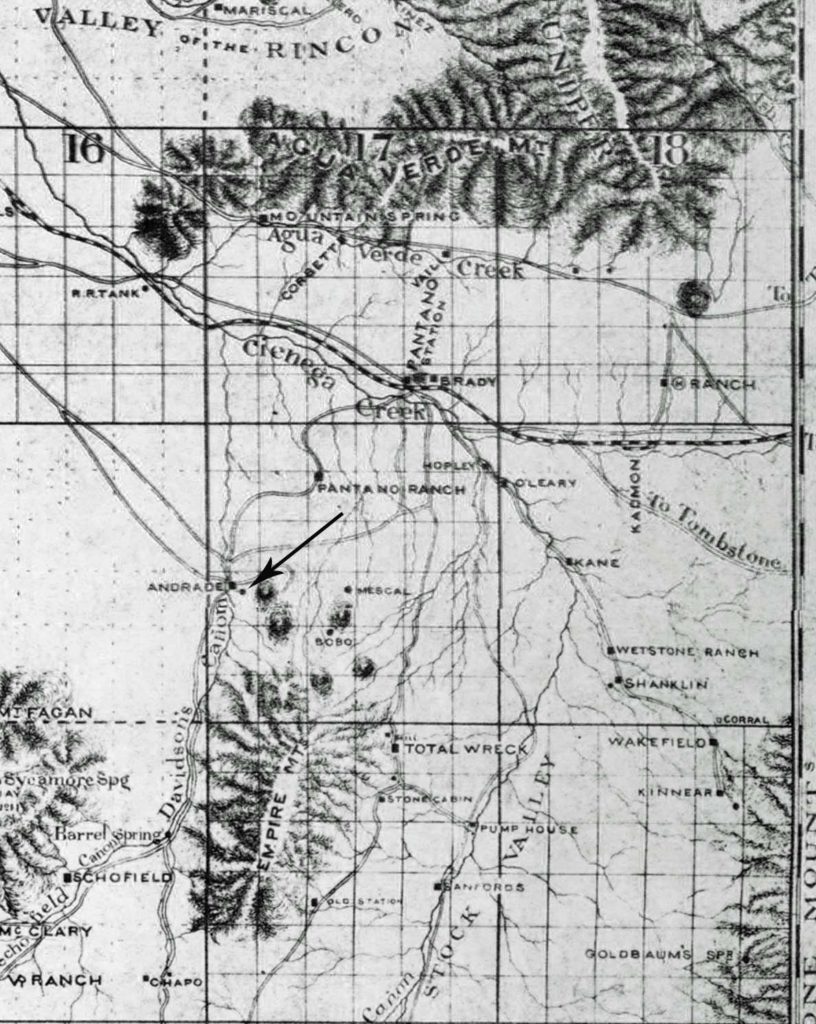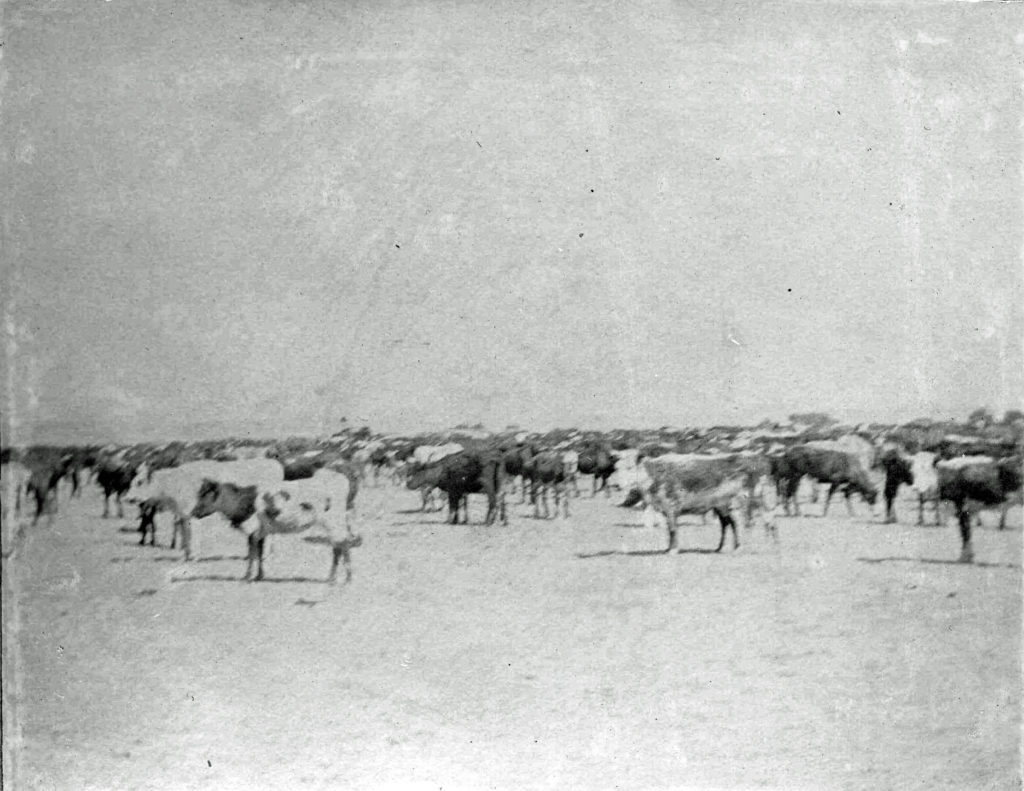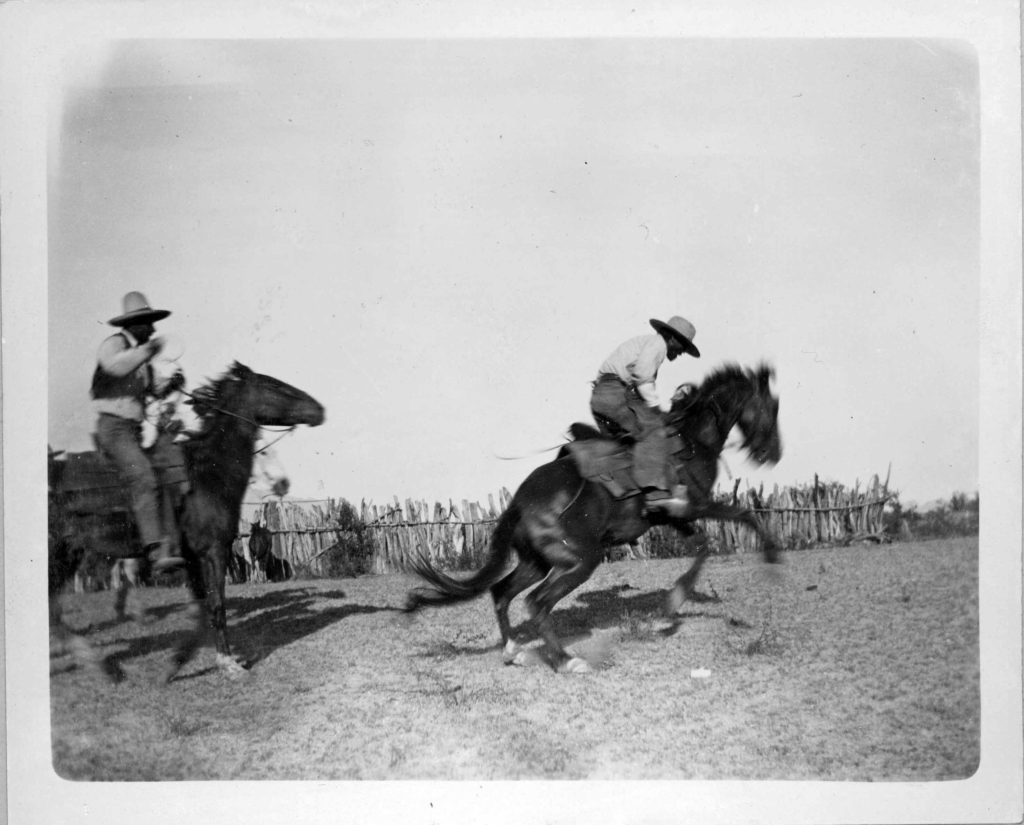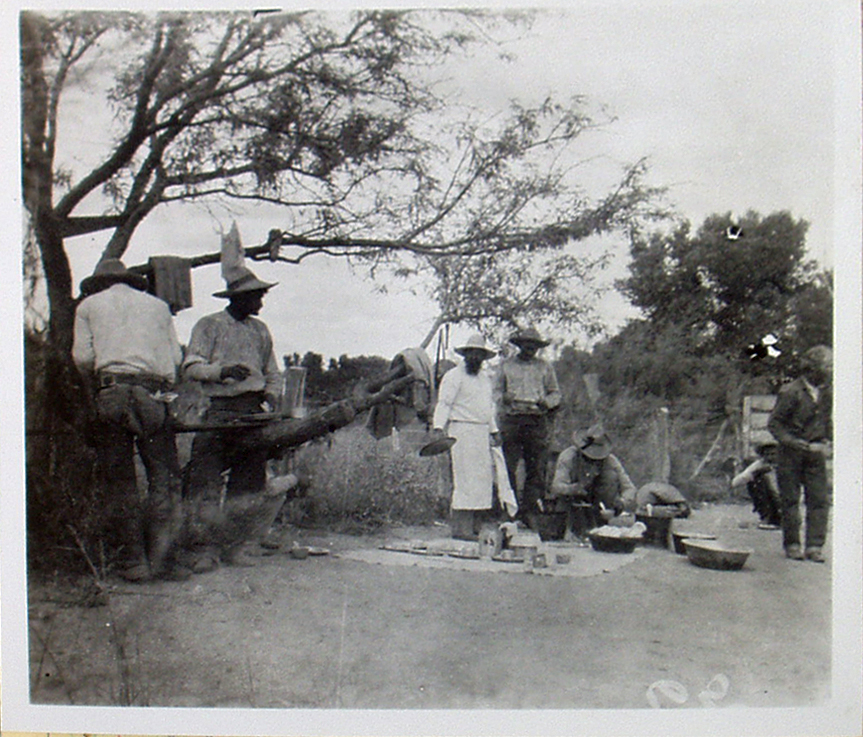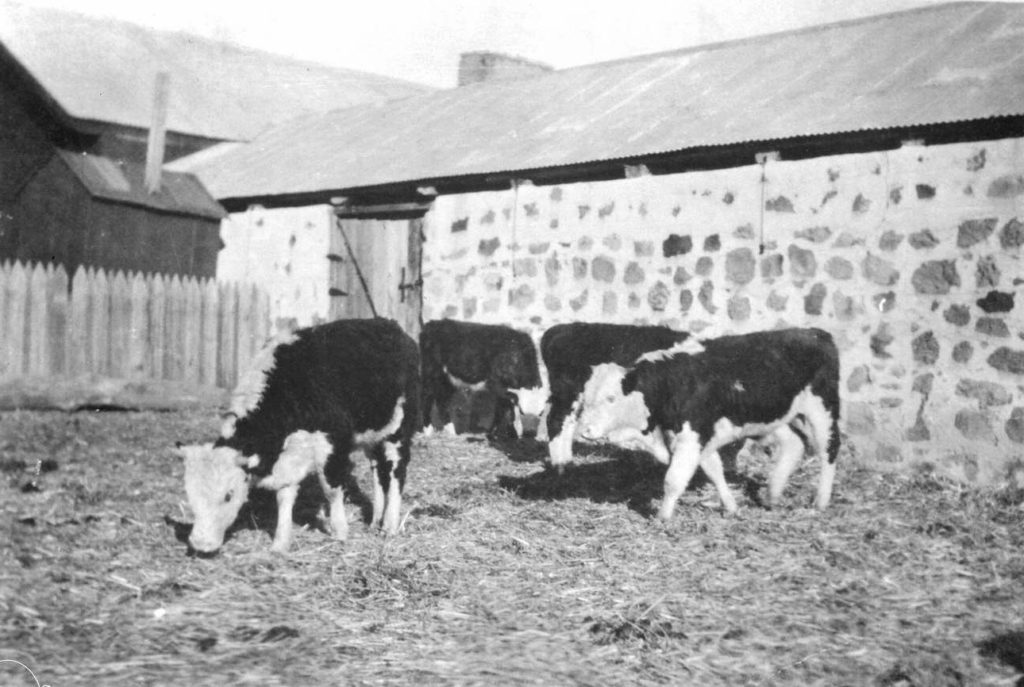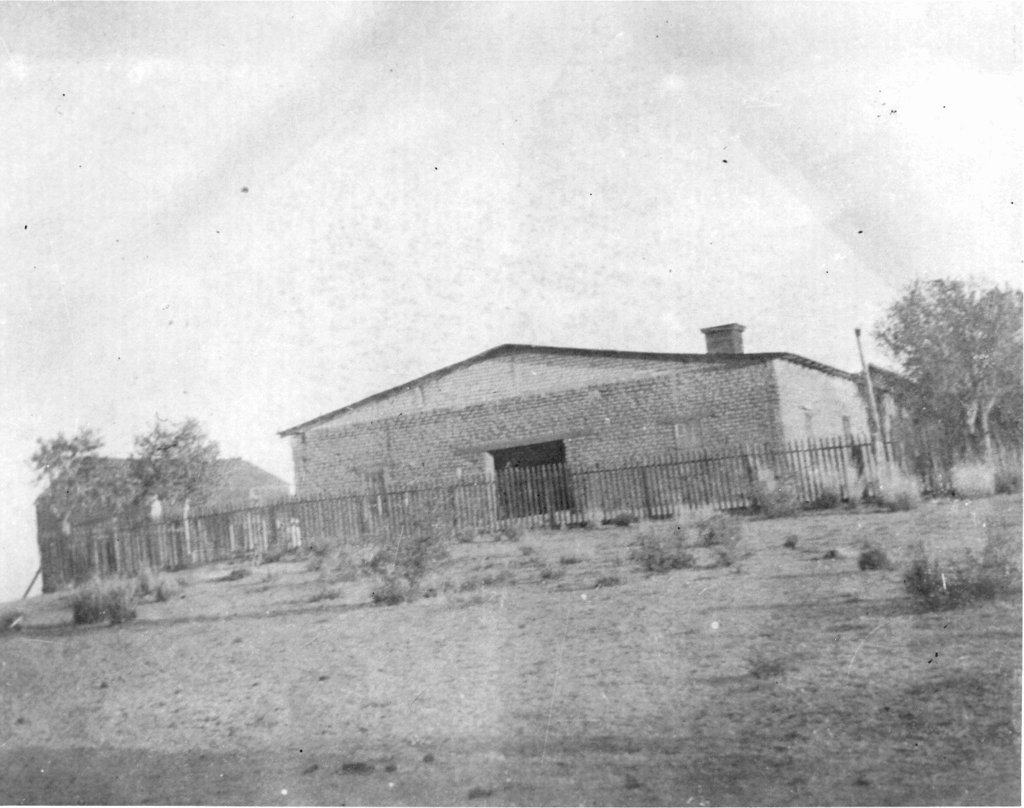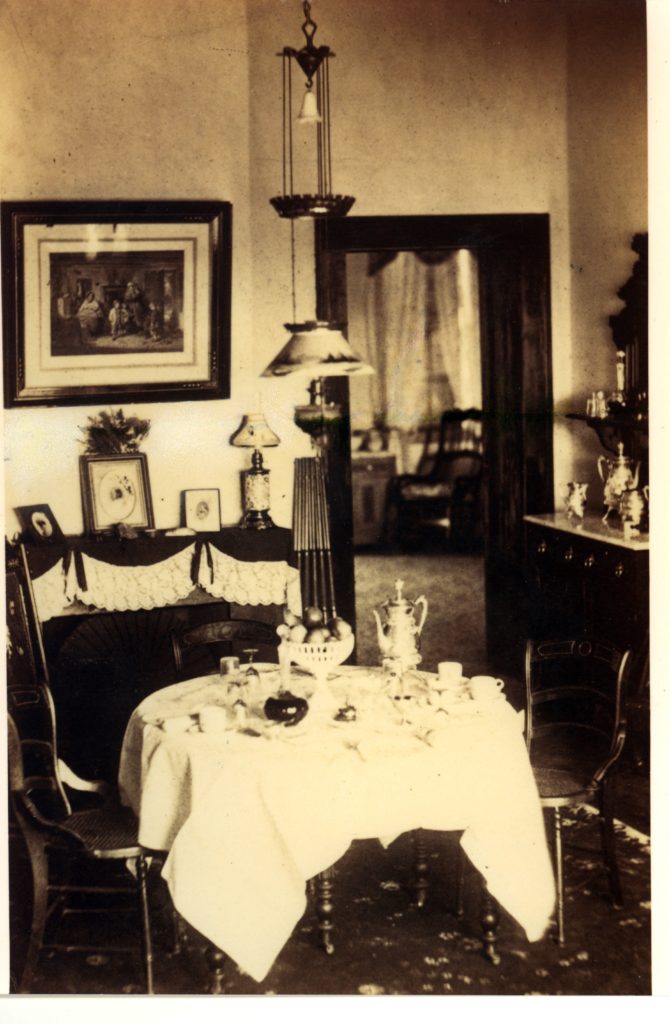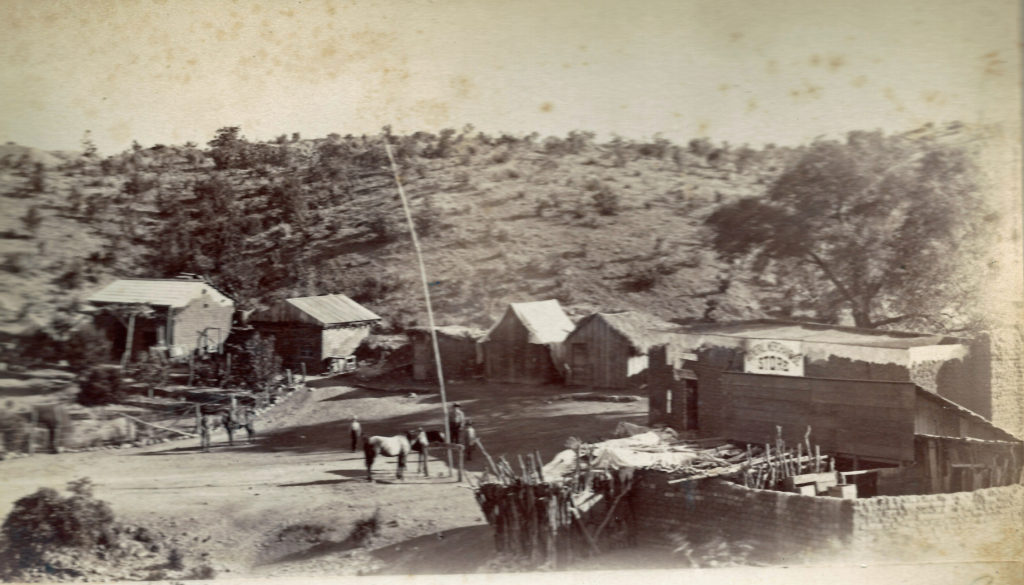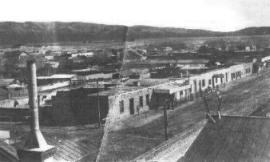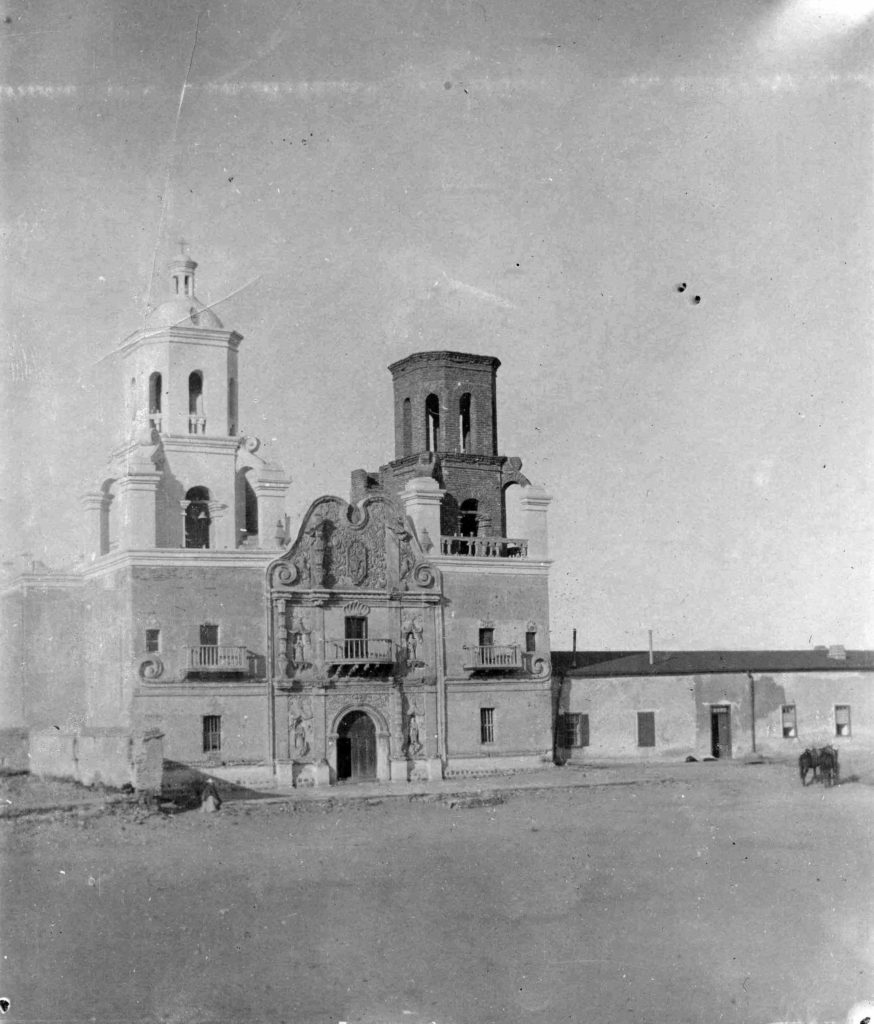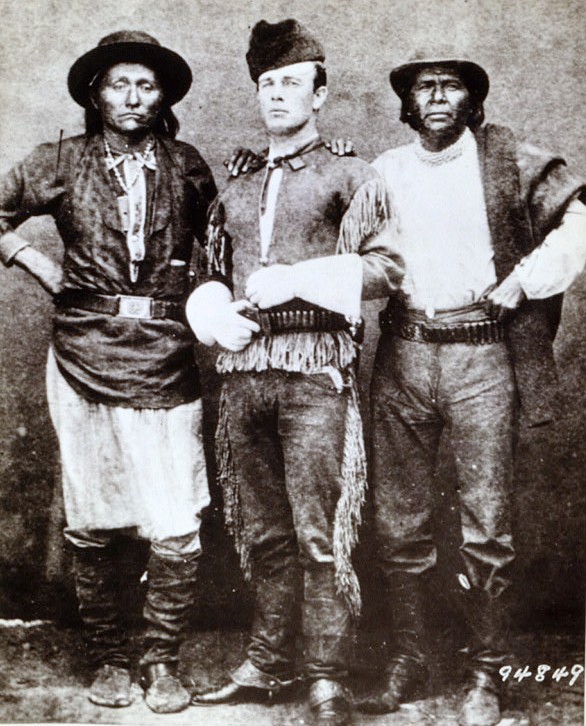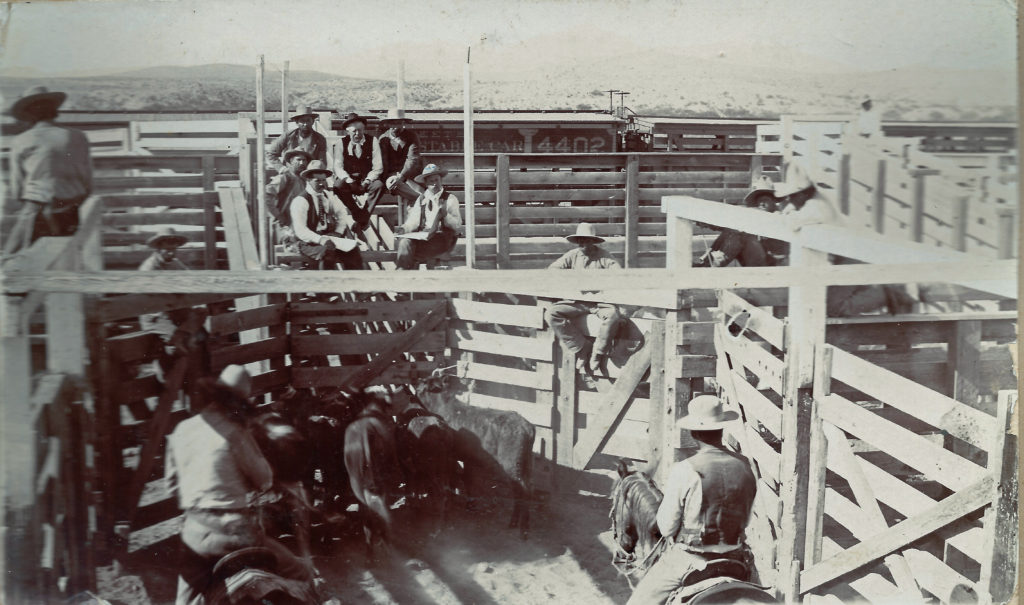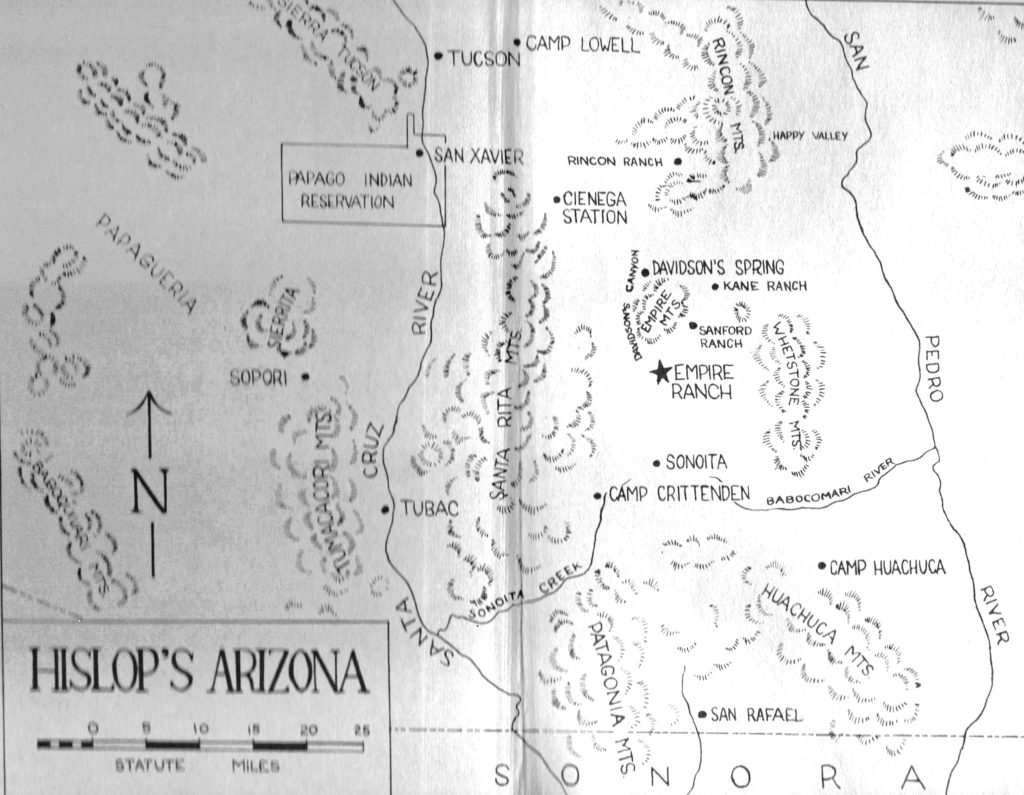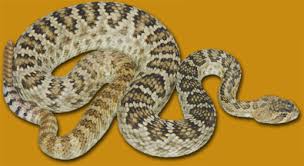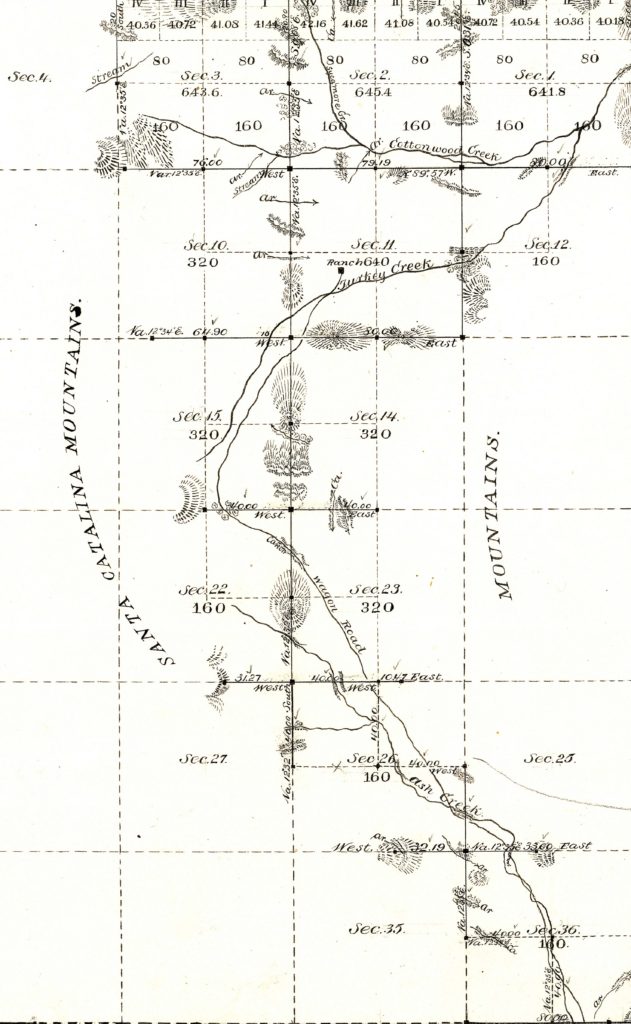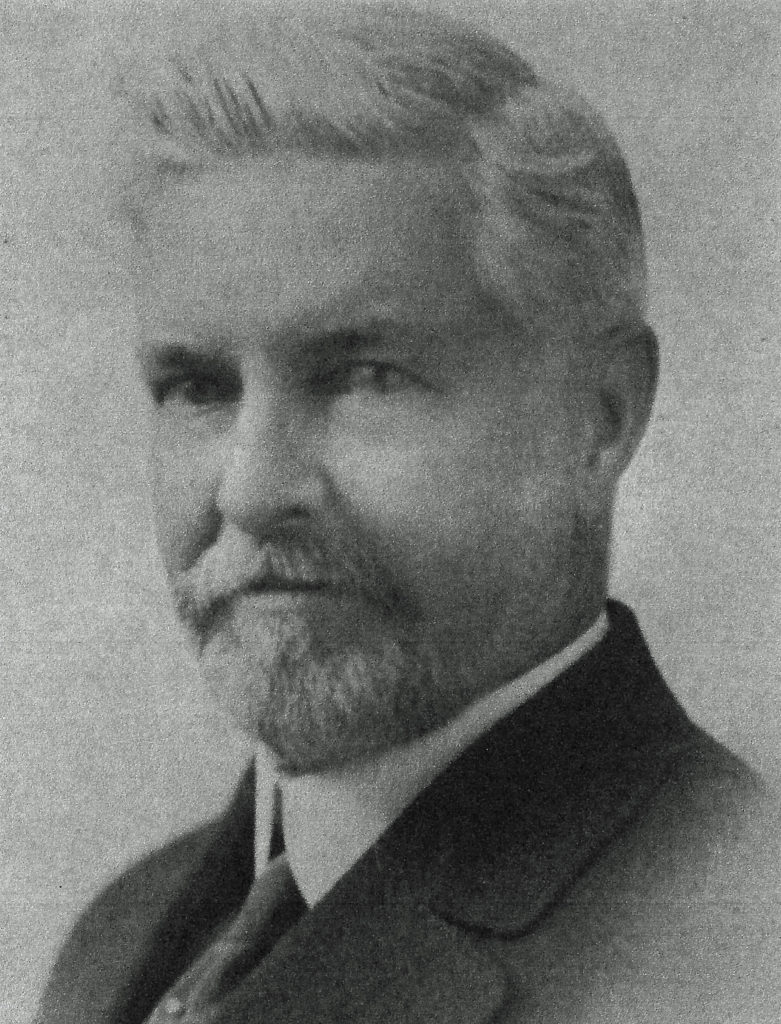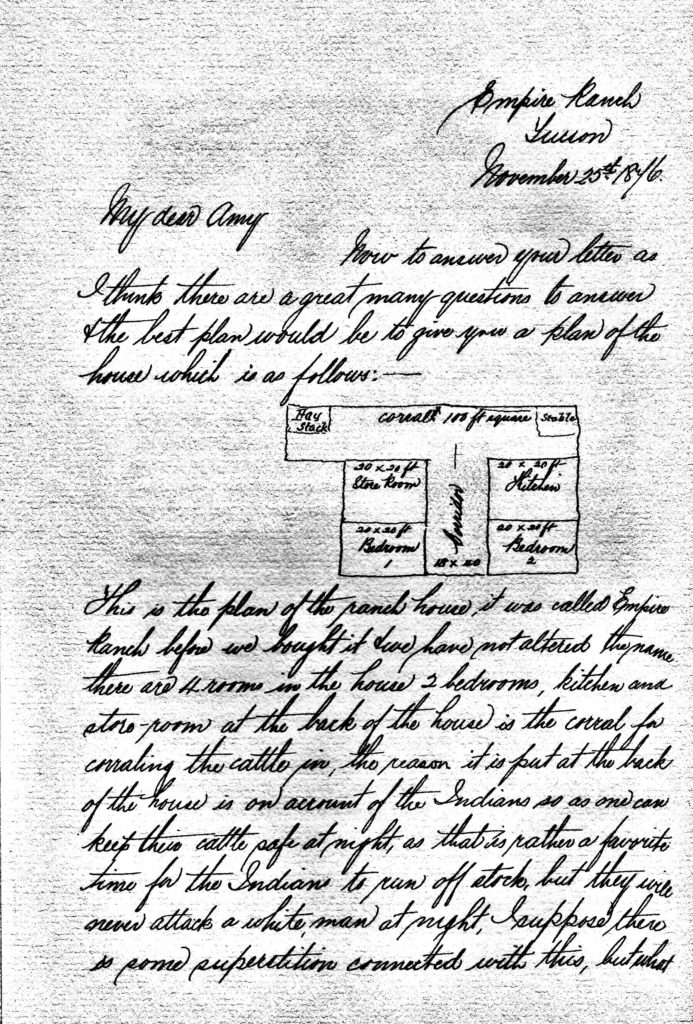The Search for the Right Ranch (July 14-August 22, 1876)
After arriving in Tucson from Los Angeles on July 13, 1876 Walter Vail and Herbert Hislop began the search for the right ranch property on which to make their fortune. The tale told below comes mostly from Hislop’s letters published in An Englishman’s Arizona. The Ranching Letters of Herbert R. Hislop, 1876-1878. Tucson: Overland Press, 1965, and Vail family correspondence from the Empire Ranch Foundation archives.
July 14, 1876 - The Search for a Ranch Begins
Hislop writes (8/7/1876): “Rested and just looked round the town for horses to buy, but did not succeed. Had more offers of ranches, it is astonishing how quickly one’s business is known in a small place like this. Everybody has the best to sell. It is quite amusing to hear them talk and hear them contradict each other, running down each other as thieves and rascals, but we have our money and intend to keep it unless we get a place suited to our requirements and on reasonable terms.”
The availability of riding stock had not improved since Walter Vail’s visit to Tucson in 1875 when he wrote (11/23/1875): “I have been trying ever since I came here to hire horses for a trip through the country but have not been able to do anything until this morning which was to buy a mule which is just the thing.”
July 15, 1876 - From Tucson to Fish’s Ranch
Hislop writes: “Started for Fish’s ranch, at 8 a.m., 52 miles from Tucson, one of us riding on horseback and the other in a buggy with the owner, Fish, who had a fine pair of horses. The horse we rode to the ranch and back, 104 miles, only had grass to eat and one day to rest so you can judge what wiry little horses they are. We stopped for lunch at 2 p.m. and had a rest of an hour and then on again… We arrived at the ranch at 6 p.m. and had supper, mutton chops, etc., taken from a sheep killed on the ranch and mighty good it was to a hungry man and when it was dark, between 8 and 9 p.m., went to bed which consisted of lying on the mud floor with a blanket round you and no windows in the house, but for all that I slept like a top.”
July 16, 1878 - First Full Day at Fish’s Ranch
Hislop writes: “Got up at daylight very much refreshed though it was such a hard bed, had breakfast and then the proprietor provided us with horses to ride over the ranch which reminds one of the South Downs, being much the same sort of country and evidently a good place for cattle, which was shown by the condition of the cattle. The house is situated on a hill but is not finished, having no doors or windows in but with a little money could be made very comfortable. We had a great deal of trouble to catch the horses but at last succeeded in getting them into the corrals. In the evening we were without milk as the cows had not come back, so had to milk some goats, it taking 3 of us to milk one, but it was worth the trouble as the milk was so good. Went to bed at 8:30 p.m. in the same style as before, taking off my boots for a change.”
July 17, 1876 - Back to Tucson from Fish’s Ranch
Hislop writes (8/7/1876): “Up at 5 a.m. and had rather a bother to catch our riding horse but the man on the ranch soon managed to catch it for us. One has to do things for themselves here and if one did not know how he would be badly off, no ceremony I can tell you. Left for Tucson at 7:30 a.m., having had two miners as bed-fellows the night before, the rain having turned them and their families out of doors so they sought refuge as good as the ranch house afforded. We stopped at 2 p.m. to water the horses and have something ourselves, but found we had come away without any bread or biscuits, so had to eat sardines and deviled turkey by themselves to stay our hunger and arrived in Tucson at 5:30, once more getting into the civilized world.
July 18, 1876 - Vail’s Impression of Fish’s Ranch
Vail writes to his fiancée Maggie (7/18/1876): I have just returned from a ranch fifty miles south of Tucson which is called the Fish ranch as it belongs to a Mr. Fish, it is quite a pretty place it consists mostly of rolling hills which reminds me very much of the Iowa prairie.
I had “Oh” such a nice dream about you Sunday night, I thought you and I where taking a walk through our old place in Plainfield and I thought that it seemed and looked to me just as it did when we lived there thirteen years ago, the trees the house and the grounds where just the same as they used to be … I thought I was showing you the places where I used to play … when imagine my disgust when I woke up and found myself rolled up in blankets on the dirt floor of Mr. Fish’s house…”
July 19, 1876 - Managed to Buy Horses
Hislop writes (8/7/1876): Heard bad news about the Indians that they had broken out in the country where we were going to and had killed 3 men. This scared us a little but for all that we were obliged to go, so bought horses and I bought a fine little horse and saddle… He is as nice a little thing to ride as one can wish for. I take him over 50 miles a day as easily as anything and only feed him on grass. It is wonderful the distances the horses will travel in this country. In the evening I was going to feel a work steer to see what condition he was in when he turned round and gave a kick on my leg but it did not hurt me much, only bruised it a little, but it might have broken my leg. I was thankful it was not worse.”
Vail writes (8/2/1876): “Hislop & I both bought horses when we first arrived in Tucson and we use them whenever we go in the country, he calls his John and I call mine Punch as he is a little thick set Indian pony they are both very gentle and are very good saddle animals. We never feed them anything when we are out in the country but what grass they can get after being picketed for the night so you can see they must be pretty tough as we have ridden them over 50 miles in day with no chance of getting anything to eat for twelve hours.”
July 20, 1876 - An Aborted Trip to the Rincon Ranch
Hislop writes (8/7/1876): Started for the Rincon Ranch at 2 p.m. and lost our way so had to turn back to Tucson, as we could not find any water. If we had camped out we thought our horses would perish and ourselves too, so thought ”Discretion was the better part of valor.”
Vail writes (7/20/1876): Since we arrived here Hislop and I have been looking about the country but as yet we have not decided definitely on anything but hope to before long as it is rather unsatisfactory rambling about but I think it best not to be in a hurry. We expect to start out in the morning to look at a place which is about 30 miles from this place, we will probably be gone about three days. I think it is just beginning to dawn on Hislop what roughing it means but I am in hopes he will not give in if he should it would place me in an awkward position. Where we are going tomorrow we can find all deer & bear we want ‘that is the man that is going as a guide says we can.’”
July 21, 1876 - Tucson to the Rincon Ranch
Hislop writes (8/7/1876): “Started from Tucson again for the Rincon and reached it at 2 p.m. after a ride of 30 miles. Here we had great hospitality shown us, the Mexican [the ranch was owned by Joaquin Tellez, sometimes spelled Telles] and his family who did not speak a word of English, but having been studying up Spanish and having a book with me I got along first rate. If I wanted to inquire anything about the ranch I made a rush to the book and looked for the word I did not know. It was grand fun I can tell you, but now I am beginning to pick up the language. One is obliged to learn Spanish to be able to travel the country. Our meals consisted of beans and baked flour and water and bad coffee, but even that I relished as I have such an enormous appetite and can eat nearly anything. While we were making our dinner off this sumptuous fare we had one of the sons of the family brushing the flies away from us all the time, as they were so troublesome. I am sure they could not have done more for princes. Bed-time came at last and I inquired if there were snakes or tarantulas as they call them here, which are very large spiders and are very poisonous, and they told me there were, so you can imagine I slept none too comfortable in my blanket that night.”
July 22, 1876 - A Long Rainy Night
Hislop writes (8/7/1876): “Left the Rincon at 2 p.m. for Fish’s ranch, a distance of 30 miles across the mountains and a rough way it was. There being no road we had to guide ourselves by a compass and managed to lose our way even with this. We travelled till sundown, when we could see no longer and a fearful storm catching us, had to camp there and then in the mountains, sitting in our saddles to keep a dry seat. Seeing that it was not going to give over, we made our bed, using our saddles for pillows, having one blanket underneath us and two over us, but the rain soon penetrated through and in the morning when we woke the rain had just soaked us through. I was lying in a pool of water which had drained off my saddle and felt none too lively only having had a couple of biscuits since the day before at 1 p.m. All night the wolves lay round us making night hideous with their yells, it just sounded as though the Indians were upon us, but we had our trusty revolvers with us always keeping them handy.”
Vail writes (8/2/1876): “I left Tucson about 10 days ago since which time I have traveled about 200 miles in different directions which isn’t very easy work especially when one has to sleep all night in a bad storm with no other protection than a blanket and a saddle for a fellow, all this after a hard days ride with no supper and no chance of getting anything to eat until the middle of the next day with thirty miles between you and grub and the wolves making such a row all night that a fellow couldn’t hear himself say his prayers.”
July 23, 1876 - Breakfast at Davidson Springs
Hislop writes (8/7/1876): “We got up at sunrise and saddled our horses which looked pretty well considering that they had not had any water since the day before at 2 p.m. and rode away to try and find the road. We felt pretty cold and miserable I can tell you and were suffering from thirst and found a place called Davidson’s Springs at 11 a.m. where we had a breakfast of eggs and bread and milk. I never felt so pleased before. It seems rather strange to have to go 50 miles before you see a house but here you have to do it and very often the whole distance without getting water for your horses. From Davidson’s Springs we started for Fish’s ranch and reached it at 9 p.m. having had quite enough riding for one day.”
July 24, 1876 - Back at Fish’s Ranch
Hislop writes (8/7/1876): “We rode round the ranch and helped the man to herd his cattle, as we wanted to see what our work would be like and here we stayed for a week, he providing us with horses. It was good for the man and good for us and during our stay little incidents as well as accidents happened.”
July 25, 1876 - Hislop’s “Little Accident”
Hislop writes (8/7/1876): “The little accident that occurred was I happened to get on a bucking horse and no sooner I was on his back than he began bucking with me. I stuck there a little time but at last he had me off and then kicked at me, but luckily missed and bolted away as hard as he could. I did not get hurt except my hip was all bruised, as the horse was 16 hands high and was a good height to tumble from. This county is famed for bucking horses and no others can buck like them. It is a funny sensation, I did not know wherever I was going to up so high in the air. If you see anyone that has ever been in California, they will tell you what a bucking horse is. I am not anxious to get on one again, as I am not quite tired of my life.”
July 26, 1876 - Hislop Assumes the Role of Cook
Hislop writes (8/7/1876): “The third day I was appointed cook and so while they were out in the morning herding, I was making bread and preparing dinner. It was grand fun, if anyone could have seen me making the bread. I put it in the bake pot (here they bake in pots, having no ovens) and my fire was too hot and began to raise it too quickly and when I thought it was nicely done I took it out but found on cutting it open it was in the same condition in the middle as when I put it in, so cut it in quarters and baked it separately very well indeed. As I had some time to spare before their return, I thought I would make some custard which was thoroughly appreciated and very nice indeed though I say it myself, at least I know it all went very soon. Of course, I burnt myself with the oven and the hot bread and talk about jumping, when I did it I nearly jumped out of my skin. If anyone had seen me how they would have laughed.”
July 27, 1876 - Dealing with Pesky Flies
Hislop writes (8/7/1876): “At the ranch the flies were very troublesome so the thing was to make a trap and so I got a piece of board and spread some treacle on it and down came the flies to it. When it was full of them I had another piece of board the same size and brought it down quickly killing a great quantity at a time, thus thinned them considerable and it was a blessing as everything one ate was full of flies, as well as drink. One had to be very careful as if you swallow one it is sure to make you sick directly. The man on the ranch swallowed one one night and he was sick as soon as he had done it.”
July 28, 1876 - Hislop on His Own
Hislop writes (8/7/1876): “Another day and night I was left alone at the ranch. We tossed up who should stay and it fell to me which was not very cheerful. Cattle were lost so they had to go and find them. I slept with my revolver close to the bed that night and well loaded too. I was woke up during the night with a dog barking and listened very attentively but put it down as the wolves and turned over and went to sleep, not very soundly though.”
July 29, 1876 - Slim Pickings for Dinner
Hislop writes (8/7/1876): “The next day I made some more bread like small loaves and succeeded admirably. For 3 days we had no meat, but plenty of milk, so made our dinners of bread and milk.”
Hard to imagine that just a few years later (1890s) the Empire Ranch parlor would be set for tea with linens and silver.
July 30, 1876 - A Visit to a Gold Miner
Hislop writes (8/7/1876): “The day before we left we went to some gold diggings here. I saw gold mining and washing for the first time, one of the miners washing some gold out of a pan to show me. It seems precious hard work. This man was making 2 pounds a day at it and the night before he had just lost $100 – 20 pounds – at gambling but did not seem to mind it at all.”
August 1, 1876 - Back to Tucson
Hislop writes (8/7/1876): “We returned to Tucson from the ranch, 52 miles, getting at our destination by sundown. Here we had a comfortable bed, having laid on the ground in a blanket since July 21st, pretty rough I can tell you. Here we rested a day or two and tried to deal with a man for his ranch, but with no success, as he wanted just double what we felt inclined to give, but expect he will come down, as he wants to sell.”
August 2, 1876 - A Visit to San Xavier del Bac
Hislop writes (8/7/1876): “The other day we took a ride to see the San Haviel [Xavier] Mission, which was erected by the Jesuits in 1600 A.D. It is a very interesting old place and very prettily decorated to be out in such a wild place as this must have been and even is now. Around it is an Indian settlement. We rode back through it and saw the squaws and men doing their different work in the fields.”
Vail writes (8/2/1876):”Hislop is at me to go with him for a ride out to the old Jesuit Mission and as he does not know the road I will have to go with him. Please excuse this very stupid and doleful letter, but I will try and do better next time.”
August 3, 1876 - Tucson Happenings
Vail writes (8/6/1876): “Mr. Clum, the Indian agent that has charge of the San Carlos reservation started last week for the East with 25 Apache Indians, he expects to visit all the large cities in the East where he will show the Indians to pay the expense of transportation and keeping them which is quite an undertaking. Clum is a very fine fellow and I hope he will not lose money by the speculation.”
August 4, 1876 - More Local News
An article in the Tucson Citizen (8/5/1876) reports on railroad progress: “After years of waiting and hoping for railway facilities in Arizona, we are very soon to enjoy them; if not far into the interior, at least within our western border. For several weeks, we have seen it stated and not contradicted, that the contract had been let for building the railroad bridge across the Colorado at Fort Yuma, and this statement was given out on the authority of General Superintendent Towne. During the first twenty days of July, one hundred thousand railroad ties were delivered on the wharf at Oakland, and the southern bound trains during that time and since mostly loaded with construction material for the Southern Pacific.”
The Southern Pacific Railroad did not reach Tucson until 1880. Its arrival significantly altered the cattle industry, providing the means by which to expand markets beyond southeastern Arizona. The Vail Company cattle were shipped primarily from the Pantano station, east of Tucson and north of the Empire Ranch.
August 5, 1876 - Good Times for Pima County
An article in the Arizona Citizen, August 5th discusses the Pima County economy and possibly referred to Vail and Hislop’s explorations: “The song of hard times has been sung ever since we can remember anything. Not a year wholly passes without the doleful notes being more than uselessly hummed, not in on locality but in all places the world over. So far as Pima county is concerned we can see as little cause for crying hard times, as at any period within over six years. The farms have good crops and are receiving higher prices than for years past. Placer miners are takin out as much gold as at any time. A number of stockmen are exploring the mountains for the best localities for water and grass and intend to soon decide upon places and engage regularly and permanently in growing cattle in Pima county the best by all odds in the Territory for the business.”
August 6, 1876 - Report on Tucson Weather
Vail writes (8/7/1876): “The weather is very warm in Tucson now it is over a hundred most every day. Last night we had a sandstorm which lasted about forty minutes. There was so much sand and dust in the air that everyone had to retreat to their houses and keep the windows and doors shut while it lasted.”
August 7, 1876 - Setting Out for the Happy Valley Ranch
Vail writes (8/6/1876): “Hislop and I expect to start out in the morning to look at a ranch that belongs to Mr. Page and we will probably be gone for about four or five days so if you don’t hear from me for some time you needn’t feel worried. Page’s [Charles Paige] place is about 45 miles from Tucson and is situated between two high mountains which are as good as a fence as they are too rough for cattle to travel over which would make it a very easy range to manage stock on as they could not be driven off without being found out.”
Hislop writes (8/7/1876): “Today, August 7th, we start again for the mountains to see some more ranches and I hope to tell you in my next letter that we are settled, but until then I’ll just wish you good bye.” (9/23/1876): “We rode for 23 miles and then halted for dinner, lighting a fire and broiling some beef and bacon over the coals and most delicious it was, better by far than having it served up in fine style. Then we rode on through mountain passes for over 8 miles farther and halted for the night, picketing our horses and letting them get what grass they could, rolling ourselves in our blankets we went to sleep after having lighted our camp fire. In the night we were woke up by the wolves coming round us and giving us a treat of some of their music, but they soon got tired and left. They will sometimes come and gnaw the rope or rawhide that you tether your horse by and you always have to look out for them on account of this.”
August 8, 1876 - Arrival at the Happy Valley Ranch
Hislop writes (9/23/1876): “Waking at day-break, about 5 a.m., we got up and lighted a fire, partaking of coffee and bread and then started for the ranch. After leaving our camping place we killed a large rattle snake about 100 yds. from our sleeping place, and taking away his rattle we left him behind and journeyed on, reaching the ranch at 8 a.m. where we had some curds for breakfast and then started for a ride round the ranch, which took us 4 hours to go over about 10 miles of it as it was very hilly and rocky. On my return I acted as doctor as there was a Mexican woman ill with fever and I gave her a dose of Pyretic Saline and then a hot cup of tea afterwards and the next morning she woke up a great deal better and felt very grateful to me for it. For dinner and supper combined we had dried venison with onions and rice, this went down pretty well as we were hungry, and after having smoked the calumet of peace, I retired to my lowly bed and rolled myself in my blanket.”
August 9, 1876 - Last Day at Happy Valley
Hislop writes (9/23/1876): “The next morning we were up again at dawn of day and had the same breakfast as we had had the night before for supper and started for another ride on the ranch. He (the owner) took us to his marble quarry that he had there and it was one of the prettiest places I ever saw. Between the two sides of the quarry there was a good stream of water running through and over marble as white as snow, having little waterfalls and natural bridges which had been formed by water and time. This went right between two high mountains and was about 20 ft. wide. It was the most picturesque and romantic place I think I ever saw. We returned to the ranch at about 4:30 p.m. and partook of another sumptuous meal of dried venison and baked flour and water, and then the same programme as the night before.”
Historical note – though Hislop and Vail did not purchase the Happy Valley Ranch in 1876, Walter Vail purchased the ranch in 1882 as he expanded the land holdings of the Empire Ranch.
August 10, 1876 - Happy Valley to Cienega Station
Hislop writes (9/23/1876): “we started for Tucson again, having for breakfast a tea-cupful of venison broth and a little piece of tortoise [sic], that is baked flour and water, as that was all they had. We had eaten them out of house and home, so thought it was time to leave. We took a trail across the mountains, an old indian trail, to a place called Cienaga [sic] Station 30 miles distant. It was very rough work over the mountains, some parts were so steep we had to get off our horses and lead them down and scramble over the loose rocks as best we could. On our trail we tracked bears and deer but did not see any. The bear was a very large one by the size of his track. We arrived at Cienaga Station about 5 o’clock p.m. having been in the saddle 8 hours without food and our horses as well, but it did not seem to hurt either them or us, they seemed accustomed to it. Here we had a good meal of bacon, eggs, tarts and fruit, and we both eat rather heartily, I think more than was good for us. The mosquitoes were very bad here and we had to sleep under a mosquito guard which was very comfortable.”
August 11, 1876 - Cienega Station to Tucson
Hislop writes (9/23/1876): “… we had a very fine breakfast of broiled chicken and eggs. This was a place like a country inn, they call them stations in this country and for all these luxuries and feeding our horses with barley we only paid $6 which we considered cheap for this place and so it was. We reached Tucson in about 6 hours and then had a good wash and made ourselves look like gentlemen. I should like you to see my travelling costume. I think I must be photographed and send it to you, it would be an ornament for the album and very much admired.”
August 12-21, 1876 - Vail and Hislop Decide to Purchase the Empire Ranch
Hislop writes (9/23/1876): “We stayed in Tucson for 4 days and all the time I was very ill, not being able to do anything, having a slight attack of fever. I can tell you I wished I was well out of the country, I was miserable but doctored myself and then went out to the Empire Ranch that we have bought for change of air, and in two or 3 days gradually recovered, my diet being bread and milk not having any meat on the ranch. What made me worse at the ranch at first was I foolishly travelled all night on horseback over 30 miles in order to get away from Tucson, as I never feel well there. It is too hot, over 100° in the shade, but I am glad to say now I feel all well again and we have come back to Tucson to get workman to fix our house for us, as we are fifty miles from town and only one house between us and town, yet whenever I am at the ranch I feel very happy and when in Tucson I feel miserable.”

